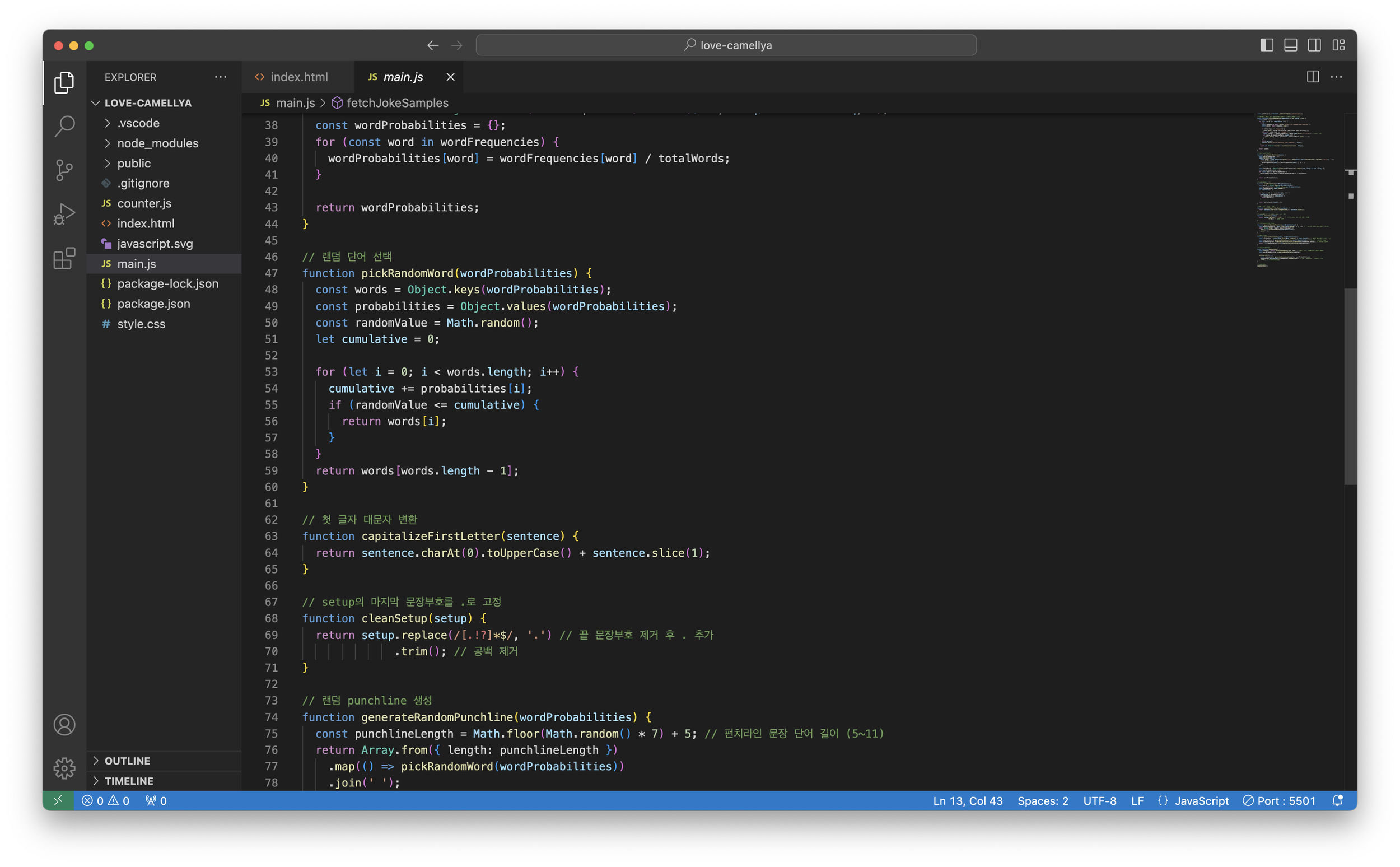The Comedians’ Grind
How to Form Algorithmic Probability
Stand-up comedians bring big laughs to people living in a harsh reality. Unlike regular comedians, however, they have a remarkable ability to turn edgy or controversial topics into humor.
Particularly, socially sensitive or taboo topics are risky to handle. If not approached carefully, they can face unavoidable backlash from the public. This demands a deep understanding of societal and cultural contexts, along with thoughtful consideration. It also requires significant effort to weave such topics into humor and satire effectively.
Inspired by these stand-up comedians, I used the joke.api to generate random jokes and then connected each joke to the name of a country that starts with the least frequently occurring letter in the joke.
However, since jokes often encompass nearly all aspects of society, some jokes ended up being highly triggering or connected to taboo topics.
This became especially problematic when associating them with countries, as it could lead to serious controversies.
When I came across some dangerously sensitive combinations, I broke out in a cold sweat, realizing how much stress stand-up comedians must endure. This made me rethink my approach and shift the humor away from the jokes themselves. To address this, I decided to change the focus. First, I set the background to a dark color and made the country name stand out in white, leaving all other text in darker tones. Then, I altered the first letter of the country name, which started with the least-used letter in the joke, by replacing it with the third least-used letter from the same joke.
I also set the joke refresh time to 2 seconds, creating a very fast-paced tempo. By doing so, I diverted attention away from potentially risky long joke sentences and instead focused it on the machine-generated country names. This design ensured that the emphasis remained on the dynamic visuals rather than the content of the jokes.



But I realized I had overlooked something. What I should have done was create new random combinations of characters based on probabilistic patterns, similar to a Markov chain. Additionally, due to the sensitivity surrounding countries, I decided to remove the country-related aspect entirely.
Then, I devised the following strategy:
Split the joke structure into a Set Up and a Punch Line.
Extracted the Punch Line sentences from jokes and calculated probabilistic patterns for word combinations, similar to a Markov chain.
Based on those probabilities, generated new, absurd, and nonsensical word combinations for the Punch Line, ensuring they retained a humorous and chaotic vibe.
Once this method was implemented, I polished the rest and ensured a consistent format and structure. As a result, the audience could first laugh at the coherence of the initial setup sentence within 7.5 seconds, and then laugh again at the absurdity and nonsensical nature of the punch line generated by the word combinations. Through this approach, I was able to overcome my lack of the eloquence and wit of a stand-up comedian, using technology to successfully create a new form of humor.








